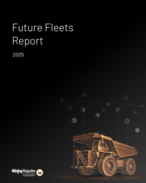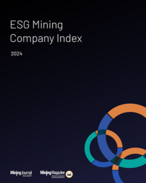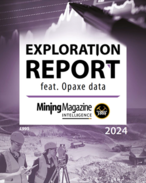This article is 20 years old. Images might not display.
The Coal Workers’ Health Surveillance Program began in the 1970s through the Federal Coal Mine Safety and Health Act which called for research into the prevention of lung disease in miners. To date at least 750,000 x-rays have been performed with high participation in the early days - nearly 55,000 x-rays in a single year. Nowadays the number is closer to 2000 per year.
Coal workers’ pneumoconiosis, or black lung, can often be detected with chest x-rays, in fact x-rays may show definite evidence of the disease before the miner notices any symptoms. Early detection and prompt and adequate control of dust exposure can prevent or slow the progression of the disease.
The recent low participation rates of miners using the free x-ray service are due to a number of reasons, according to NIOSH (the National Institute for Occupational Safety and Health), Coal Workers' Health Surveillance Program coordinator Anita Wolfe.
“The miners tell us they follow-up themselves with their personal physician. There is also stigma attached to the program because we are federal government and miners feel the mine operator may get the results of their x-ray – and they think that could be detrimental to their job because they are bound to be sick. That is certainly not the case - x-ray results only go back to the miner.”
Wolfe also suggested that a lack of nearby x-ray facilities was a reason for the low participation rate. NIOSH is currently looking to set up additional facilities in much needed areas including north-eastern Pennsylvania and all areas in the west of the country.
In cases where black lung is detected, the miner receives a Part 90 letter which allows them to request a transfer to a less dusty area in the mine (dust at 1mg per cubic meter or less) with no loss of regular pay.
The decision to transfer is completely up to the miner – however many elect not to exercise the option. A miner’s decision not to work in a lower dust environment despite having the authority to do so under 30 CFR Part 90 has been attributed to several reasons; the standout being the perceived shame attached with requesting a transfer.
“The miners tell us there is a stigma attached with getting a transfer – we think this is why some of them don’t exercise the transfer option. There shouldn’t be a stigma,” Wolfe said.
Failure to take advantage of the transfer option will be the subject of a study by MSHA to find the underlying reasons and increase interest in the program. The initiative is currently in the early stages of proposal and has not been submitted for approval as yet.
While x-rays can give some indication of black lung, Wolfe said it is made clear to miners that a diagnosis of black lung cannot be made by x-ray alone. Additional tests through a physician are needed for a comprehensive evaluation and diagnosis.
The importance of the program, and miners exercising the transfer option, was highlighted in research undertaken by NIOSH which showed that even today miners are still contracting black lung disease.
Research conducted by Dr E Lee Petsonk of NIOSH has established that despite a 1973 dust control law, which required dust levels in mines to be kept below a two milligram per cubic meter concentration for any eight hour work shift, younger miners are still contracting the disease.
Researchers suggested the study's results could be explained either through a failure by operators to meet the 2mg requirement or by the possibility that the 2mg limit is still too high.























